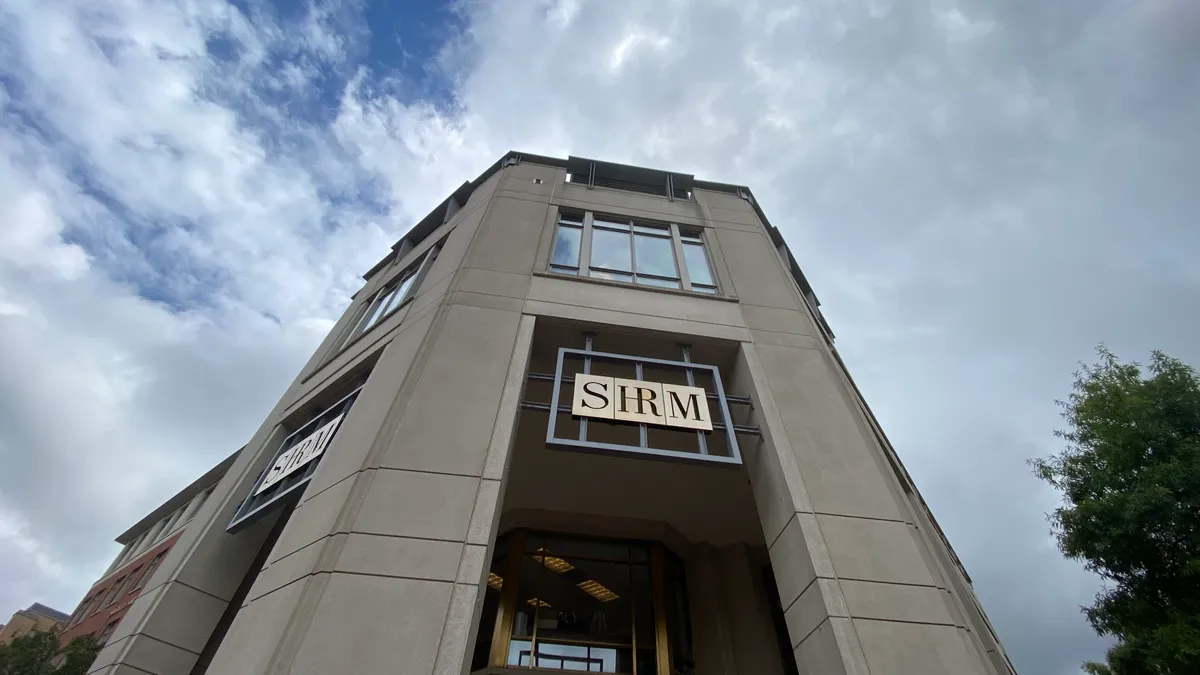Today's enterprises need talent. Study after study has shown the biggest concern for business execs right now is sourcing the right talent to survive an era of disruption; a recent Gartner study found that the talent shortage is more of a risk for organizations than even privacy regulation and cloud computing. But with unemployment hovering around 4%, some employers are asking: Should we build or buy?
Building a workforce requires preparing the people a company has now for the future, giving them the skills they need to succeed. Buying a workforce involves sourcing through a variety of techniques, including new methods like remote hiring. However, if the market doesn't support hiring, upskilling may be the only option for some employers. Giving the right internal candidates more responsibilities and greater challenges boosts engagement and retention, but not without first filling gaps in their knowledge though learning and development.
If upskilling isn't possible, external hires may be the right choice, but they can be costly and difficult to find. For many employers, time to hire can become extended when the market is tight. And for current employees, motivation can be damaged when a company looks outside rather than promoting from within.
Each employer must decide which strategy works for which position — and for many companies, the strategies could differ between departments or even job titles.
The case for building
As the rate of tech advancement continues to accelerate, Coursera's VP of Enterprise, Leah Belsky, said that some companies have turned their resources inward. "Facing a skills shortage afflicting most industries, businesses are doubling down on training their own talent in critical skills instead of hiring from a sparse talent pool," she said in an email.
Building a culture with deliberate growth and clear learning opportunities for employees is important for a few reasons, Belsky said. Typically, an "inclusive, growth-oriented culture" helps keep employees satisfied at work and improves retention — and can be particularly cost-effective if current employees can be trained up to fill necessary roles.
"The workforce is changing rapidly and there is no one-size-fits-all approach," Cliff Justice, principal, innovation and enterprise solutions at KPMG, told HR Dive. As intelligent automation continues to shift the work dynamic, businesses will need a multi-faceted approach to remain competitive, he said in an email; "Retraining requires not only investment from human resources and business groups, but a vision from senior leadership on what their future workforce will look like and the retraining and reskilling efforts to get there."
Cheryl Roubian, VP of people at Greenhouse, believes that all talent decisions should begin with a clear vision of what a company is looking for and what its business needs are. "When we're trying to build new capabilities for our business, we look around at our existing talent first," she said in an email, "but follow the same rigorous process we use for hiring to make sure we're setting up both the person and the business for success by matching skills and abilities to the needs of the role and the business."
The case for buying
When an employer simply doesn't have the resources to upskill, companies can minimize fallout from current staff, Roubian said: "With a clear picture of what you're looking for, you can explain to existing staff why you're looking for external talent. And you can explain to an internal candidate why and how their skills don't line up with what the business needs right now."
Employers must consider the business urgency of the problems the company wants to solve, Courtney Cook, VP of strategic development at Korn Ferry, told HR Dive in an email. Can the company afford to wait? While upskilling has many benefits, "new employees will bring fresh ideas and different ways of doing things," she said. "The decision to build versus buy must consider the lost opportunity cost of not buying a talent-ready specialized skill set and immediately being able to solve short-term business needs."
Hitting the right mix
When discussing whether to build or buy, the short answer is that HR leaders need to invest in both approaches, Rachel Bitte, Jobvite's chief people officer, told HR Dive. Continuously investing in the talent you have is a must, but sometimes upskilling them takes their path outside your door. The good news, however, is that the talent pool is always changing and growing, she added; "Keeping your eyes open for candidates to help fill the gaps in your company should be a continuous practice," she said.
Leaders need to have a clear and supported vision for what their company's future workforce will look like and the changes needed to make that a reality, Justice said. To determine whether to hire externally or retrain employees, "leaders need to set clear and strategic goals," look for ways to best achieve them and then execute decisively.
"Retaining and developing top internal talent within the organization is critical to long-term growth and sustainability," Cook said, "while buying talent from outside of the company with specialized skills with immediate impact to transform an agenda or short term is a complementary combination and approach. It's critical to train existing people, but sometimes as strategy changes, you'll need different skill sets to achieve goals. That's why a mix of build/buy is essential."






















